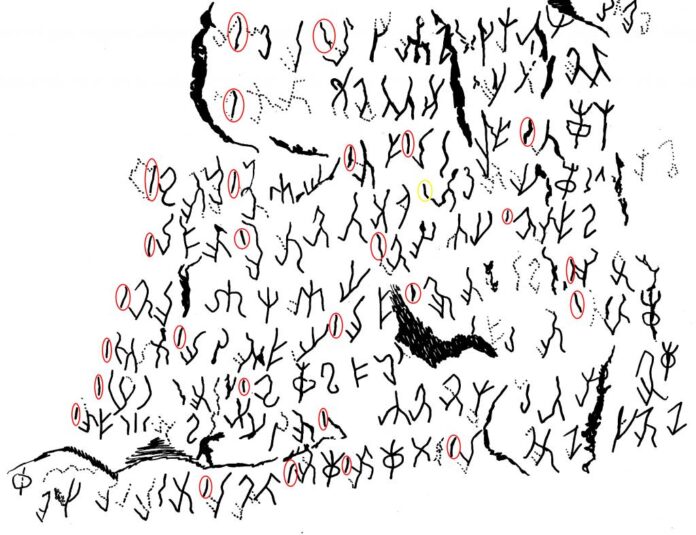Researchers have decoded an ancient script dating back thousands of years to the Kushan Empire for the first time, nearly 70 years after it was first identified. It records a previously completely unknown Middle Iranian language.
The researchers have proposed the name Eteo-Tocharian to describe the newly identified language, which is believed to have been, at one point, one of the official languages of the Kushan Empire.
A team of “early-career researchers” with the University of Cologne identified about 60 percent of the characters and is working to decipher the remaining characters, according to a paper published in the journal Transactions of the Philological Society.

The discovery of a new bilingual inscription in Tajikistan by archaeologist Bobomullo Bobomulloev in 2022 led linguists at the University of Cologne to the breakthrough in their decipherment of an unknown Kushan script and the classification of a previously unknown language. Photo courtesy of Bobomullo Bobomulloev

A team of “early-career researchers” with the University of Cologne have identified a new language largely thanks to the Dašt-i Nāwur Trilingual. Photo courtesy of Bild Collège de France; Zeichnung_Natalie Korobzow

A closeup photo shows discovery made in the Almosi Gorge in Tajikistan in 2022. Photo courtesy of Bobomullo Bobomulloev
Since the 1950s, archaeological excavations in Kazakhstan, Uzbekistan, Tajikistan and Afghanistan led to the discoveries of several dozen inscriptions in the unknown writing system. The inscriptions ranged in length from two- and three-character fragments to longer inscriptions with several lines of text.
Most of the writing samples were found clustered in what was the ancient Iranian civilization of Bactria, which was bordered by the Hindu Kush and Hisar Range. But the language was neither Bactrian nor Khotanese Saka, another language once spoken in western China.
The breakthrough was made when researchers were able to identify the name of Kushan emperor Vema Takhtu in the longest inscription, which was written in three languages. The inscription is known as the Dašt-i Nāwur Trilingual.
The three scripts on the Dašt-i Nāwur Trilingual include the unknown script and two others more commonly used in the area at the time—Greek script for the Bactrian language and Kharoṣṭhī script for Gāndhārī.
Another recent discovery of two new inscriptions in the unknown script also proved essential for the researchers. The new inscriptions include a “likely bilingual with Bactrian” which “allows for the substitution of plausible phonetic values for several signs of the unknown script.”
“This discovery led to renewed attempts by several researchers to decode the script – independently of one another,” the researchers said in a news release.
Previous research has shown that the unknown script, believed to have been used over a span between 200 B.C. and 700 A.D., has a superficial resemblance to Gāndhārī but it was not able to be translated.
The linguists were able to decipher the language by using a methodology that was used to decipher unknown scripts in the past, such as Egyptian hieroglyphs using the Rosetta Stone.

























